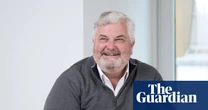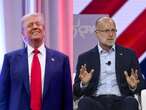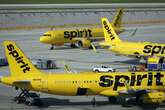In the first Trump administration, “Infrastructure Week” became a running joke: Despite a dozen announcements, it never happened. Then, after Biden took office, he worked with Congress to pass the massive Bipartisan Infrastructure Law, with $1.2 trillion in funding for everything from fixing aging bridges to removing lead pipes, adding a national EV-charging network, and upgrading the electric grid. Now, 66,000 projects are underway. But it’s possible that some of the funding—especially for sustainable transportation—will be at risk when Trump becomes president again.
We talked to Transportation Secretary Pete Buttigieg about the work that’s been done, what might happen next, and how local leaders can keep making progress.
66,000 is a huge number of projects. Can you give some context about the scale of what’s happening compared to previous administrations?
There’s been nothing like it in my lifetime. It’s almost hard to conceptualize the scale of work that’s going on. One way I think about it is, as secretary, I visit some of these projects, of course. But if I visited a project every day for the rest of my life, I would not live long enough to see half of the projects. So that just gives you a sense of how widespread the work is.
Some of them are multibillion-dollar efforts that represent some of the biggest transportation infrastructure actions of our lifetime. Others are six-figure planning grants or streetscape improvements that will potentially save lives at a very particular intersection in a very particular community. And everything in between. We’ve got 10,000 bridges—actually, 11,400 is the new count. Projects that are improving bridges, airports, ports. It’s also the breadth of this work, geographically and across all the different modes and forms of transportation, that really will have us looking at this as America’s infrastructure decade for the rest of my lifetime.
A lot of funding from the Bipartisan Infrastructure Law is going to sustainable transportation projects, including work to help repair neighborhoods that were cut in half by highways in the middle of the past century. Could you share an example of what’s happening in one of those cities?
[In Syracuse,] we’ve got $180 million headed to address the division that was created by the current I-81 design and replace it with something that’s really going to be an asset to the community, with sidewalks and bike paths and green spaces and other things that are really going to contribute to the quality of place around what is now a viaduct.
We’ve got one in Detroit, where I-375, which cuts like a gash through what had been thriving historic Black neighborhoods, will be razed and turned into a boulevard that’s going to add value. There are different scales and scopes in different parts of the country, but so many projects are going to just create a better quality of life in the communities that we’re funding.
Earlier this year, a new high-speed rail line broke ground going from Vegas to California. And Amtrak is also expanding routes. What do you think it would take to make trains more widely used for routes where people often fly right now?
Anytime you have a city pair that is a short flight or a medium drive, that’s a great candidate for a better rail connection. We’re seeing that on routes like the Borealis route in the Midwest, connecting Chicago through Wisconsin and Minnesota. That’s regular-speed rail, so to speak. And then you have this link of Las Vegas to Southern California that will likely be the first true high-speed rail in service on American soil. That’s a very exciting development because I think when people experience that in real life, on American soil, for themselves, in one place, they’re going to want it everywhere else too. And so it really becomes the first step toward a network that we could create in the years to come.
You’ve also funded a lot of public transportation projects like the bus rapid transit route in Madison and the Red Line extension in Chicago. How much do you think projects like that are starting to change how people commute every day?
Transit’s incredibly important. It’s not always considered the most glamorous part of transportation, but it might be the one that can impact the most everyday lives. People’s life opportunities change when they have affordable, reliable ways to get to a job or education. The Chicago Red Line extension is a great example of that. People live within the city limits of Chicago who don’t have a car and are more than an hour away from downtown at the jobs there. We can change that with this Red Line extension, and that’s what we’re doing with the funding from the Federal Transit Administration, to extend the Red Line further down the South Side.
But not every transit project has to be a subway or light rail. One thing we’re doing a lot of is bus rapid transit. That’s what the Madison project is. We’re doing Las Vegas and several around the country that bring transit to places that really didn’t have the kind of speed and consistency that the BRT can bring. The bottom line is, [these projects] improve people’s economic opportunity, and there is a significant environmental benefit whenever you can create a good transit option for somebody in their daily commute.
The EV-charging network is starting to grow now, but do you think that could have rolled out faster? How do you think it can continue to grow if it doesn’t necessarily get support from the next administration?
What we’ve really sought to do is fill in the gaps that won’t get addressed on their own by the private sector. Since we got here, the number of EV chargers has roughly doubled. There are 200,000 publicly available chargers. That’s been led by the private sector.
The federally supported chargers are set to come online in the next few years. We made a choice to ensure that these chargers were made in America and have other quality standards and work with the states, knowing that by design that would involve them happening over more time than if we were just buying cheap Chinese chargers off the shelf and putting them all over the country. I think that’s the right decision. One thing I would note is since most of this funding flows through the states anyway, I don’t think the states are going to stop doing their good work or send the money back, just because things changed here in Washington.
When states are awarded funds, does that come in installments? If some of it is scheduled to come after Trump takes office, how much risk is there that maybe that could be cut off at some point?
There’s a process. We announce that a state or a city is getting an award to build a project, and then there’s more work to do before the funding is obligated—an agreement has to be signed to do that. That can take some time because there are a lot of checks and balances around the taxpayer money that goes into that. But I think that it would be very difficult to deny a community the funding that they have earned. And I would note that that funding is going to states red, blue, and purple.
In these final two months, is the DOT trying to accelerate the process of awarding grants in some way? Are you prioritizing any types of projects?
We felt a sense of urgency from the moment the bill was signed, and that will continue until the last day that we’re here. Today [November 15], we have announced $3.5 billion in more than 100 locations. So that will continue. Our desire to move quickly is nothing new. But we recognize our responsibility to keep getting these dollars out the door so that they can be quickly used to build good things well.
I know you started your political career as a mayor. How much do you think that local governments can do now to keep making progress on sustainable transportation?
I think local government is hugely important, and state government will be very important as well. None of the projects we’re talking about, these 66,000 projects, none of them was conceived here at headquarters. And none of them is being delivered directly by the federal government. We provide the funds. It’s really the state, the city transit agencies, tribes, and others who are making it happen. So I do think that they will continue to lead the way. I remember a few years ago when a number of cities came together on the Climate Mayors—not just U.S. cities, but cities around the world that were tired of waiting for their respective national capitals to catch up on sustainability—and realize that between them they had most of the world’s GDP anyway. I do think you’ll maybe see a renewed season of leadership from the ground up to make sure that things keep happening even if it’s less steady here in Washington.








No comments